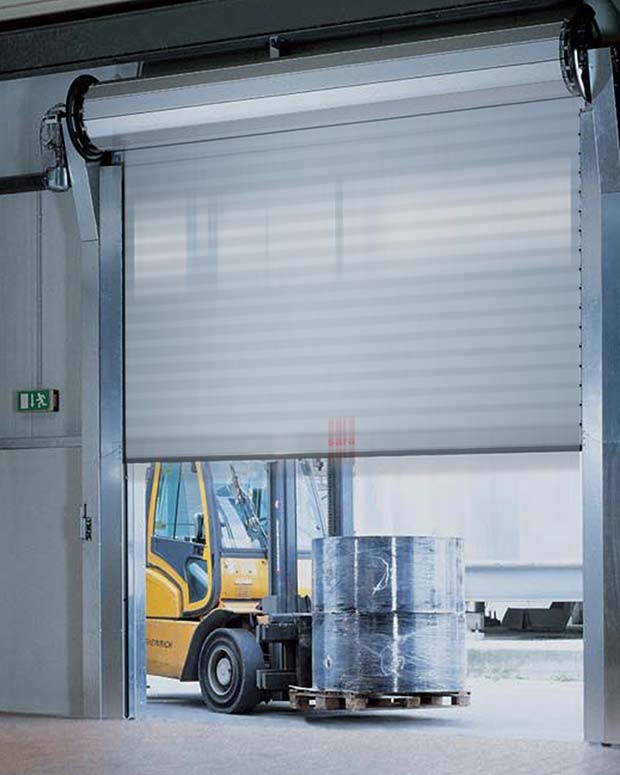Loading bays are hard working environments. Equipment and machinery should be properly maintained and regularly serviced to ensure safety, reliability and efficiency. David James, a service surveyor with loading bay specialist sara LBS offers an overview of what is required.

contracts to help make sure that equipment is
well maintained throughout its life.
Any location where work is carried out is subject to regulations and directives; those that cover loading bays include the Machinery Regulations, Machinery Directive, the Lifting Operations & Lifting Equipment Regulations (LOLER) and the Provision and Use of Work Equipment Regulations (PUWER).
Other regulations, say relating to food hygiene and working procedures, could also apply, so each situation needs to be individually assessed. While the details of these requirements are important, here we need only look at their general scope.
A lot of loading bay equipment, such as scissor lifts, dock levellers and even powered doors will legally be classed as ‘machinery’ so must be maintained in a condition such that it is safe to operate. This will require the regular checking of safetycritical components, such as springs, cables, locks, stops, and catches and adjusting or replacing them if necessary. Typically this work will be carried out as part of a wider machine inspection that also looks at the operating mechanisms and controls.
For scissor lifts and dock levellers, the electro-hydraulic drive will need to be checked, looking for worn hoses and leaks, topping up the oil and making sure the power pack is in good condition. Other parts, electrical and mechanical, should also be checked at the same time, and – importantly – thorough cleaning is recommended, especially underneath the equipment where dirt and litter will naturally tend to accumulate and could become a trip hazard, hygiene risk or even harbour vermin.
Loading bay doors also need to be maintained in good order. Most of the wearing parts, including springs, cables, drums, brakes, bearings and shaft will be in the drive system, and these should be the main focus of inspection and maintenance.
Generally, these are located at the top of the door so will probably be at least three metres, and as much as seven metres above the concrete floor of the loading bay, bringing working at height practises and legislation into play.
Many of the components in loading bay equipment will be of a quality such that it can be expected to last the lifetime of the equipment, but regular inspection and maintenance must still be carried out to ensure safety and maintain efficiency. However, it is also important to account for the amount of use each piece of equipment is subject to. Obviously frequently used equipment will wear quicker than rarely used, and the same can be said of heavily loaded verses lightly loaded.
Accidents and damage
Loading bay personnel will know that accidental damage can occur. Probably the most frequent cause is trucks reversing into loading bay doors, outside canopies and dock shelters. In such cases there is often a need for a short term repair because it is unlikely that there will be appropriate spares available on site.
When sara LBS gets such a call we like one of our surveyors to attend site. They will assess the situation and recommend a course of action that will minimise disruption for day to day operations. Further they may be able to salvage some undamaged parts and will also do a thorough check to make sure there is no hidden damage.
In order to maintain loading bays in peak condition – able to support efficient production operations, ready to accommodate extra workload at busy times, and able to provide a safe working environment for all personnel – sara LBS likes to run preventative maintenance programmes with its clients.
Recognising that every company’s operations and loading/unloading requirements is unique, the first step is consultation and the development of a tailored preventative maintenance package. This will involve regular inspection and servicing and replacement of worn parts to extend the lifetime of loading bay equipment and keep it operating safely and meeting appropriate regulations throughout its working life.
sara LBS offers one, three and five year service contracts to help make sure that equipment is well maintained throughout its life.
These contracts cover equipment supplied by sara LBS but can also be extended to embrace equipment from other manufacturers and suppliers. This means clients have one-stop service, maintenance and emergency back-up at all times, thus ensuring that loading docks, scissor lifts, dock shelters, high speed doors and all associated equipment are maintained to the highest standard.
In order to be able to deliver this level of support sara LBS maintains one of the largest UK service networks for loading bay equipment and has engineers on the road and available at all times. Most companies acknowledge that while not the most glamorous activity in their business, loading and unloading of goods and materials is vital for efficient production. So any effort put into ensuring loading bays are able to operate effectively will pay valuable long term dividends.
SARA LBS




Comments are closed.